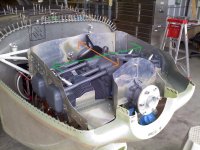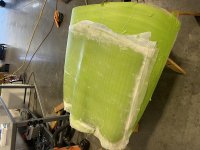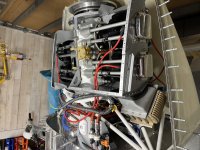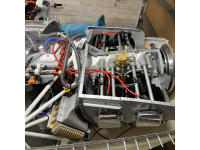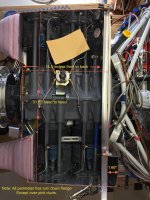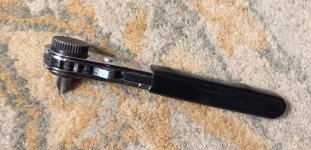Alternate plenum layup
Interesting. I'll go study the drawing a bit more to see how much wiggle room I have there. Thanks for the info.
I have an alternate option but you do need the forward plate attached.
Install the top cowl
Reach inside with a sharpie on a stick and draw a line on the top cowl where the baffles would touch if they were longer.
Remove the cowl.
Apply packing tape to the cowl covering the area defined by the marking is a few inches of border.
Wax the tape.
Apply two layers of saturated cloth then peel ply. Cure.
If you want a carbon fiber plenum, use one layer of carbon fiber.
While waiting for the cure, apply packing tape to the inside and outside of the baffles from the edge down about 2". Apy masking everywhere else to protect. Wax it.
Lay a 2" wide strip of two layers of saturated cloth over each edge. Half inside. Half outside.
Draw lines on the top cowl layup where the baffle lines show through.
Now take the layup from the top cowl and lay it on top of the wet cloth strips on the baffles.
Lift the portion of the strips on the outside and press them in place against the top. Doesn't have to be perfect. As long as some of the strip sticks and cures. It will look like the "eve" on a house. Fully cure.
Pop the plenum off. Apply flox and cloth to the inside vertex all the way around. Cure.
Now you can cut off the "eve".
What you end up with is a plenum exactly matching the contour of the cowl and fitting the inside shape of the baffles.
The rest is just adding layers inside to strengthen it.
If it's a carbon fiber plenum, use black tinted epoxy to saturate the additional layers of fiberglass added inside.
The exterior is finished with a fill of clear epoxy like 105 & 207.
Probably not the expert method, but it works and it fits.



